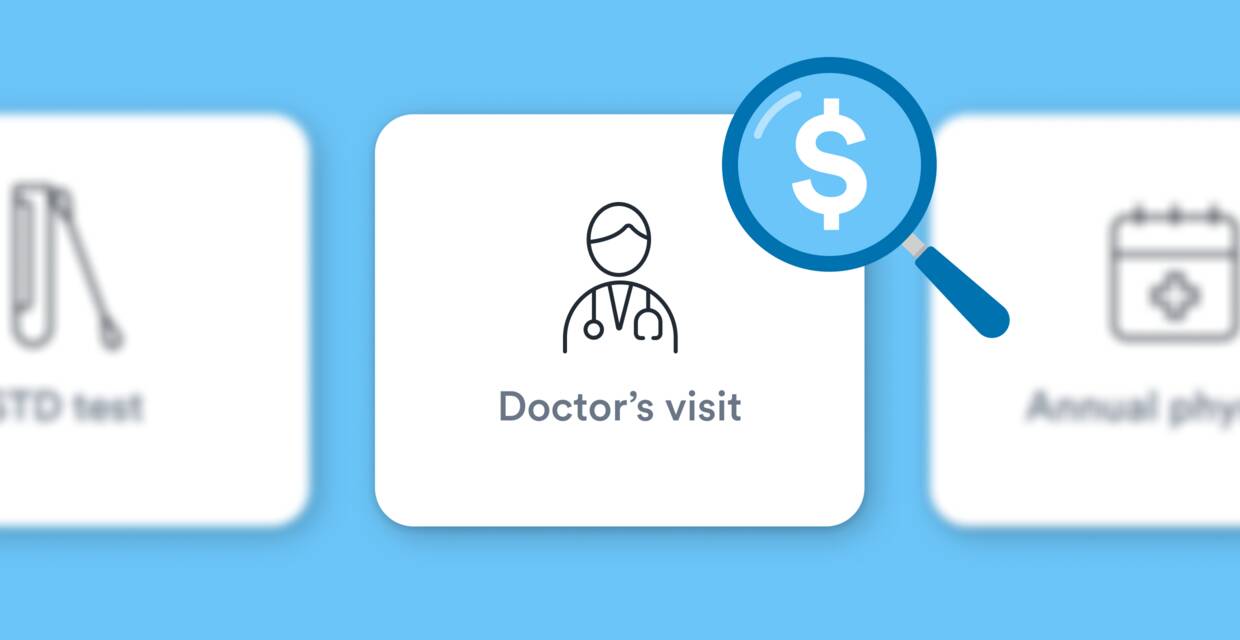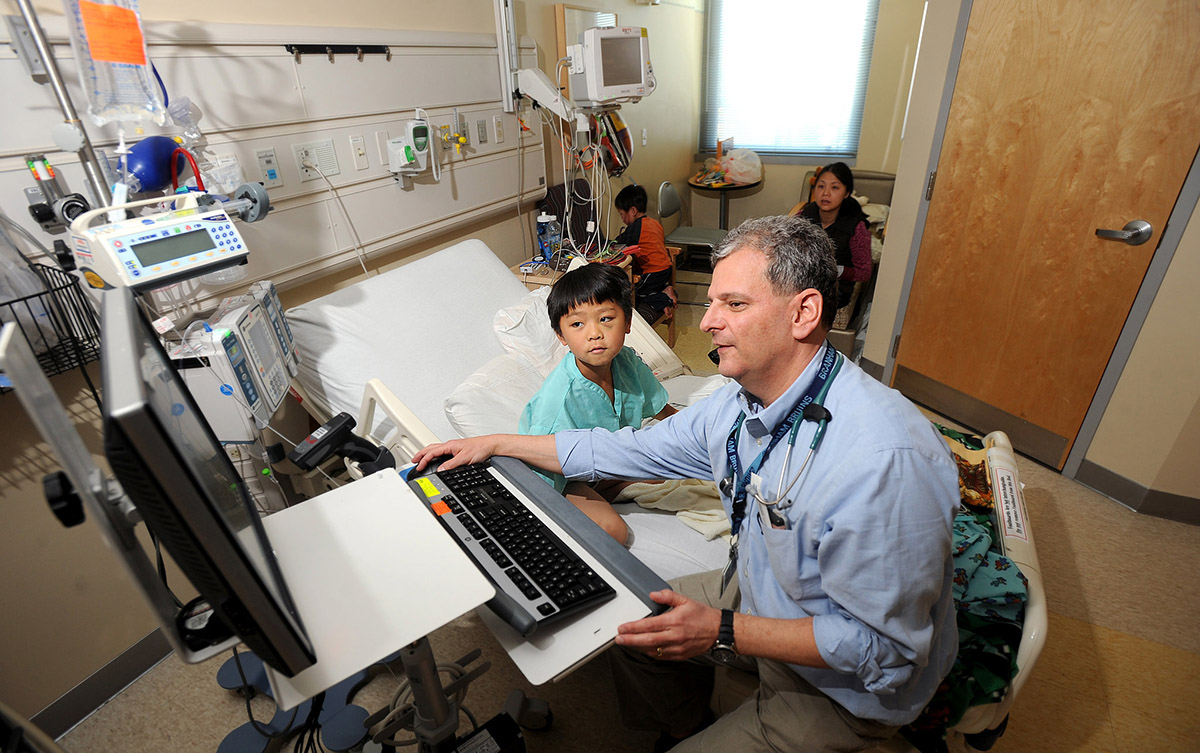Home>Finance>How Much Does A Gynecologist Visit Cost Without Insurance?


Finance
How Much Does A Gynecologist Visit Cost Without Insurance?
Published: November 18, 2023
Find out the cost of a gynecologist visit without insurance and get your finances in order for your next appointment. Don't let financial worries prevent you from taking care of your health.
(Many of the links in this article redirect to a specific reviewed product. Your purchase of these products through affiliate links helps to generate commission for LiveWell, at no extra cost. Learn more)
Table of Contents
- Introduction
- Factors Affecting the Cost of a Gynecologist Visit without Insurance
- Average Cost of a Gynecologist Visit without Insurance
- Ways to Save Money on Gynecologist Visits without Insurance
- Community Health Clinics and Nonprofit Organizations Offering Low-Cost Services
- Medicaid Coverage for Gynecologist Visits
- Conclusion
Introduction
Visiting a gynecologist is an essential aspect of women’s healthcare. Regular check-ups not only allow for early detection of any potential issues but also provide a platform for discussing concerns and receiving appropriate guidance. However, for individuals without insurance, the cost of a gynecologist visit can be a significant financial burden.
Without insurance coverage, the cost of a gynecologist visit can vary depending on various factors, such as the geographical location, the specific services required, and the individual provider’s fees. Understanding the average cost of a gynecologist visit without insurance and exploring alternatives to reduce expenses can help individuals make informed decisions about their healthcare.
In this article, we will explore the factors that affect the cost of a gynecologist visit without insurance, provide an estimate of the average cost, and discuss ways to save money on these visits. Additionally, we will highlight community health clinics and nonprofit organizations that offer low-cost services and briefly discuss the potential coverage options through Medicaid.
It is important to note that while the information provided in this article is intended to assist individuals without insurance, those with insurance coverage should consult their specific insurance plan to understand their benefits, coverage, and out-of-pocket costs for gynecologist visits.
Let us now delve into the factors that influence the cost of a gynecologist visit without insurance.
Factors Affecting the Cost of a Gynecologist Visit without Insurance
Several factors can impact the cost of a gynecologist visit for individuals without insurance. Understanding these factors can help individuals anticipate potential expenses and make informed decisions about their healthcare.
1. Geographical Location: The cost of healthcare services can vary significantly depending on the region or city in which you reside. For example, urban areas tend to have higher medical costs compared to rural areas. It is advisable to research the average cost of gynecologist visits in your specific location to get a better idea of what to expect.
2. Type of Visit: The type of gynecologist visit can also impact the cost. Routine check-ups and preventive care visits generally have lower costs compared to specialized visits for specific concerns or procedures.
3. Additional Tests and Procedures: If additional tests or procedures are required during your visit, such as Pap smears, blood tests, or ultrasounds, these can add to the overall cost. The necessity of these tests and procedures will depend on the individual’s specific health needs and concerns.
4. Provider’s Fees: Different gynecologists may have varying fee structures based on their level of experience, expertise, and reputation. Providers practicing in high-demand areas or renowned medical institutions may charge higher fees for their services.
5. Medical Equipment and Facilities: The accessibility and quality of medical equipment and facilities utilized during the gynecologist visit can also factor into the overall cost. State-of-the-art technology and advanced diagnostic tools may contribute to higher expenses.
6. Medications and Prescriptions: If medications or prescriptions are prescribed during the visit, the cost of these drugs needs to be considered. Prices can vary depending on the type of medication and the pharmacy where it is purchased.
7. Uncomplicated vs. Complicated Cases: The complexity of the case being treated can impact the cost. Uncomplicated cases that only require routine check-ups and basic preventive care tend to have lower costs compared to complex cases that require specialized treatments or surgeries.
It is essential to keep these factors in mind when estimating the potential cost of a gynecologist visit without insurance. However, it is important to remember that prices can vary, and these factors are not exhaustive as each individual’s situation may differ.
Next, we will explore the average cost of a gynecologist visit without insurance.
Average Cost of a Gynecologist Visit without Insurance
The average cost of a gynecologist visit without insurance can vary depending on several factors, including geographic location, the type of visit, and any additional tests or procedures required. While exact figures can differ, we can provide a general estimate to give you an idea of what to expect.
On average, a routine gynecologist visit without insurance can range from $100 to $250 for a basic check-up and consultation. This cost may include a physical examination, breast examination, pelvic examination, and discussion of any health concerns or questions you may have. However, additional tests, procedures, or follow-up visits will incur additional costs.
If additional tests or procedures are needed during the visit, such as a Pap smear, blood tests, or ultrasound, the cost can increase significantly. The price of these additional services can vary depending on the specific tests or procedures performed and the healthcare facility’s pricing structure. These additional costs can range from $50 to $200 or more.
It is important to note that the costs mentioned above are general estimates, and actual prices can vary widely. It is always recommended to contact the gynecologist’s office or healthcare facility directly to inquire about their specific pricing structure and any potential discounts or payment plans they may offer for uninsured individuals.
Next, let’s explore some ways to save money on gynecologist visits without insurance.
Ways to Save Money on Gynecologist Visits without Insurance
For individuals without insurance, the cost of gynecologist visits can be a financial burden. However, there are several ways to save money and make these essential healthcare appointments more affordable.
1. Research and Compare Prices: Before scheduling a gynecologist visit, it is worth researching and comparing prices from different providers in your area. Look for clinics or medical practices that offer transparent pricing or discounts for uninsured patients.
2. Ask for a Self-Pay Discount: Many healthcare facilities offer self-pay discounts for patients who do not have insurance. When contacting the gynecologist’s office, inquire about any available discounts or affordable payment plans specifically designed for uninsured individuals.
3. Consider a Sliding Fee Scale: Some community health clinics and nonprofit organizations offer services on a sliding fee scale based on income. These organizations adjust their fees based on an individual’s financial situation, making gynecologist visits more affordable for low-income individuals.
4. Look for Low-Cost or Free Clinics: Community health clinics and nonprofit organizations often provide low-cost or free gynecological services to those without insurance. Research local clinics in your area that specialize in women’s healthcare and inquire about their services and pricing options.
5. Utilize Women’s Health Programs: Some states have specific programs aimed at providing low-cost or free women’s health services. These programs may include gynecologist visits, contraceptive services, and screenings. Research state-specific resources and programs that can help reduce the cost of your gynecologist visit.
6. Consider Telehealth Options: Telehealth, or virtual visits, can offer a more cost-effective alternative for routine gynecologist consultations. Many healthcare providers now offer telehealth services, allowing you to have a virtual visit with a gynecologist from the comfort of your own home, eliminating travel costs and potential facility fees.
7. Ask about Generic Medications: If your gynecologist prescribes medication, inquire about generic alternatives. Generic medications are typically more affordable than brand-name equivalents and can help reduce the overall cost of your treatment.
8. Seek Assistance from Nonprofit Organizations: There are nonprofit organizations that provide financial assistance to individuals in need of medical care. These organizations may offer grants or other forms of support to help cover the cost of gynecologist visits. Research local and national nonprofit organizations that specialize in healthcare assistance and reach out to them for potential options.
By considering these cost-saving strategies, uninsured individuals can make gynecologist visits more accessible and affordable, ensuring their reproductive health needs are met without overwhelming financial strain.
Next, we will explore community health clinics and nonprofit organizations that offer low-cost services.
Community Health Clinics and Nonprofit Organizations Offering Low-Cost Services
For individuals without insurance, community health clinics and nonprofit organizations can be valuable resources for accessing low-cost gynecological services. These organizations are dedicated to providing affordable healthcare options and ensuring that individuals can receive the necessary medical care regardless of their insurance status.
Here are a few examples of community health clinics and nonprofit organizations that offer low-cost gynecological services:
1. Planned Parenthood: Planned Parenthood is a well-known nonprofit organization that provides comprehensive reproductive health services at affordable rates. They offer gynecological exams, screenings, birth control services, and other reproductive healthcare options. Planned Parenthood operates clinics across the United States, making it accessible to many individuals.
2. Federally Qualified Health Centers (FQHCs): FQHCs are community-based healthcare centers that provide comprehensive healthcare services, including gynecological care, on a sliding fee scale based on income. These centers receive federal funding to ensure that individuals, regardless of their ability to pay, can access primary care services.
3. Local Health Departments: Many local health departments offer low-cost or free gynecological services to individuals without insurance. These departments may have clinics dedicated to women’s health or partnerships with local healthcare providers to offer reduced-cost services.
4. Clinics for Underserved Populations: There are clinics specifically focused on providing healthcare services to underserved populations, such as low-income individuals or immigrants. These clinics often offer gynecological services at reduced costs and may have partnerships with local hospitals or healthcare systems.
5. Free Clinics: Some communities have free clinics that provide healthcare services, including gynecological care, to individuals without insurance. These clinics rely on volunteer healthcare professionals and community support to offer services at no cost to patients.
6. State-Specific Programs: Some states have programs, such as family planning programs or women’s health initiatives, that provide low-cost or free gynecological services. These programs are designed to ensure that individuals have access to essential reproductive healthcare services, including gynecologist visits and contraception.
It is important to research and reach out to these organizations and clinics in your area to determine their specific services, eligibility requirements, and pricing structure. They can provide valuable resources and support for accessing affordable gynecological care.
Next, let’s explore the potential coverage options through Medicaid for gynecologist visits.
Medicaid Coverage for Gynecologist Visits
Medicaid is a government-funded healthcare program that provides coverage to individuals with low income. This program plays a crucial role in ensuring access to affordable healthcare, including gynecological services, for those who qualify.
If you do not have insurance and meet the income requirements, Medicaid can help cover the cost of gynecologist visits. The specific coverage and guidelines may vary from state to state, but generally, Medicaid covers a range of gynecological services, such as:
1. Annual Well-Woman Exams: Medicaid typically covers routine well-woman exams, which include pelvic examinations, breast examinations, and discussions about reproductive health and family planning.
2. Screens and Tests: Medicaid may cover important screenings and tests essential for women’s health, such as Pap smears, HPV testing, and sexually transmitted infection (STI) screenings.
3. Contraception: Medicaid generally covers various contraceptive methods, including birth control pills, intrauterine devices (IUDs), and implants, allowing individuals to choose the option that best suits their needs.
4. Pregnancy-Related Care: Medicaid provides coverage for prenatal care and delivery expenses, ensuring that pregnant individuals have access to the necessary medical care throughout their pregnancy.
5. Family Planning Services: Medicaid covers family planning services, including counseling, education, and access to contraception, to help individuals make informed decisions about their reproductive health.
It is important to note that Medicaid eligibility requirements may vary depending on your state’s regulations. Eligibility is often based on income level, household size, and other factors. To determine if you qualify for Medicaid coverage, you can contact your state’s Medicaid office or visit the official Medicaid website for more information.
If you meet the eligibility criteria, applying for Medicaid can provide you with much-needed coverage for gynecologist visits and other essential healthcare services.
Finally, let’s summarize the key points discussed in this article.
Conclusion
For individuals without insurance, accessing affordable gynecological care can be a challenge. However, understanding the factors that influence the cost of gynecologist visits, exploring low-cost options, and utilizing available resources can help alleviate the financial burden.
We discussed the various factors that can affect the cost of a gynecologist visit without insurance, including geographical location, the type of visit, additional tests/procedures, provider’s fees, medical equipment/facilities, and the complexity of the case.
The average cost of a gynecologist visit without insurance can range from $100 to $250 for a routine check-up, with additional tests and procedures incurring extra expenses. However, costs can vary widely depending on the individual provider and location.
To save money on gynecologist visits without insurance, we recommended researching and comparing prices, asking for self-pay discounts, considering sliding fee scale options at community health clinics, looking for low-cost or free clinics, utilizing telehealth services, asking about generic medications, and seeking assistance from nonprofit organizations.
Moreover, we highlighted reputable organizations such as Planned Parenthood that offer affordable reproductive health services, as well as federally qualified health centers, local health departments, and free clinics that provide low-cost or free gynecological care.
Additionally, we discussed the potential coverage options through Medicaid for gynecologist visits. Medicaid offers coverage for a range of gynecological services, including well-woman exams, screens/tests, contraception, and pregnancy-related care. Eligibility for Medicaid varies by state and is usually based on income and household size.
In conclusion, while navigating healthcare without insurance can be challenging, there are options available to help individuals access affordable gynecologist visits. By understanding the factors that impact costs, exploring low-cost resources, and potentially qualifying for Medicaid, individuals without insurance can prioritize their reproductive health without compromising their financial well-being.
Remember, it is essential to research and consult with specific healthcare providers and organizations to determine their fees, services, and eligibility criteria in order to make informed decisions about gynecological care.














